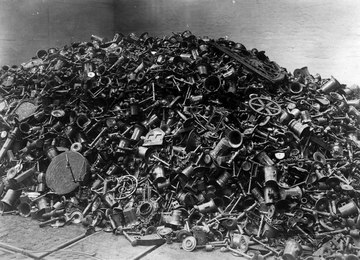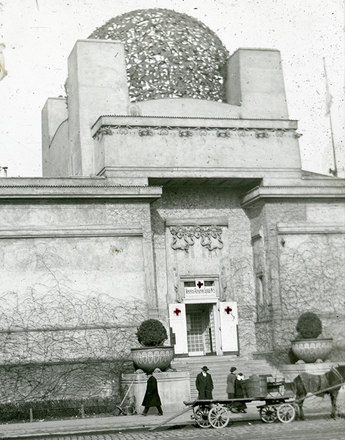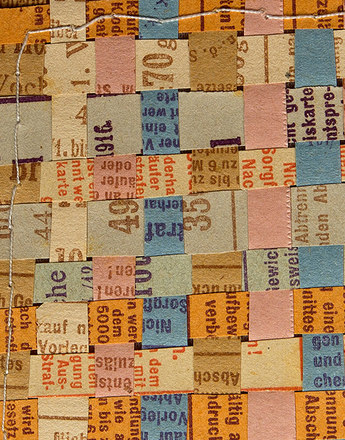Mining was stepped up during the war to ensure the supply of metals. Metal was also collected and melted down for military purposes. Examples included the Patriotic War Metal Collection committee and the melting of church bells.
The Patriotic War Metal Collection committee was founded at the end of 1914. Citizens were urged to hand in household appliances. There were a number of collection points including three in Vienna. A commission headed by Captain Alfred Walcher Ritter von Molthein was formed to rescue culturally important objects. He made decisions together with the heads of the artillery armoury, the provincial curators and the heads of the provincial museums. Some of the collected objects were put on display at the end of 1915 in the officers’ mess on Schwarzenbergplatz in Vienna. A richly illustrated catalogue was also published, showing kitchen and pharmacy mortars, pans, holy water bowls and pewter church chandeliers, shoe and belt buckles, furniture hardware, clock dials, clothing and book clasps, and snuffers. In view of the continuing shortage of metal, citizens were urged between late 1915 and mid-1916 to hand in appliances made of pewter and nickel and their alloys, copper, brass and bronze. Copper roofs without historical or artistic value were also dismantled. In early 1917 the handing in of ecclesiastical metal objects was ordered, although ultimately a large number of parishes were exempt. After the war some of the objects salvaged from the war metal collection were obtained by the Museum of Art and Industry (now Museum of Applied Art). The Technical Museum also acquired around 1,000 of these objects.
Bell metal contained large amounts of copper and tin. For centuries bells had been removed from belfries during times of war and melted down for military purposes. Their removal gave rise to strong protests among the population. In May 1915 a campaign was launched for the voluntary donation of church bells. They were divided into three categories by age, and only bells from the nineteenth and twentieth centuries were melted down. By May 1917 they had been used up. A new order was issued and this time only bells from before 1600 were exempt. According to estimates at the time, 90 per cent of the bells in Lower Austria, Salzburg and Tyrol were requisitioned and as many as 96 per cent from Moravia and Silesia were melted down. To obtain even more tin, the organ pipes in churches, schools, concert halls and private homes were requisitioned, although historically important organs were again spared. Around 88 per cent of the organ pipes in the crown lands were used. In view of the army’s extreme demand for metals, measures like the war metal collection and church bell requisitioning were still completely inadequate.
Translation: Nick Somers
Klampfl, Simon: Die „Patriotische Kriegsmetallsammlung“ (1915) des Österreichischen Museums für angewandte Kunst, Diplomarbeit Univ. für angewandte Kunst, Wien 2008
Lackner, Helmut/Jesswein, Katharina (Hrsg.): 100 Jahre Technisches Museum Wien, Wien 2009
Schubert-Soldern, Fortunat von: Metallbeschlagnahmung in Österreich, in: Clemen, Paul (Hrsg.): Kunstschutz im Kriege. Berichte über den Zustand der Kunstdenkmäler auf verschiedenen Kriegsschauplätzen, 2 Bände, Leipzig 1919, Band 2, 215–221
-
Chapters
- Chicory, peat & Textilit: surrogates before the war
- The age of iron
- Bells for bullets: metal collection
- Fragile clothing: textiles and paper fabrics
- Well shod? Tanning agents and leather
- Rubber goods: elastic and essential
- From far and near: resins and resin products
- The 1918 surrogate exhibition in the Prater






